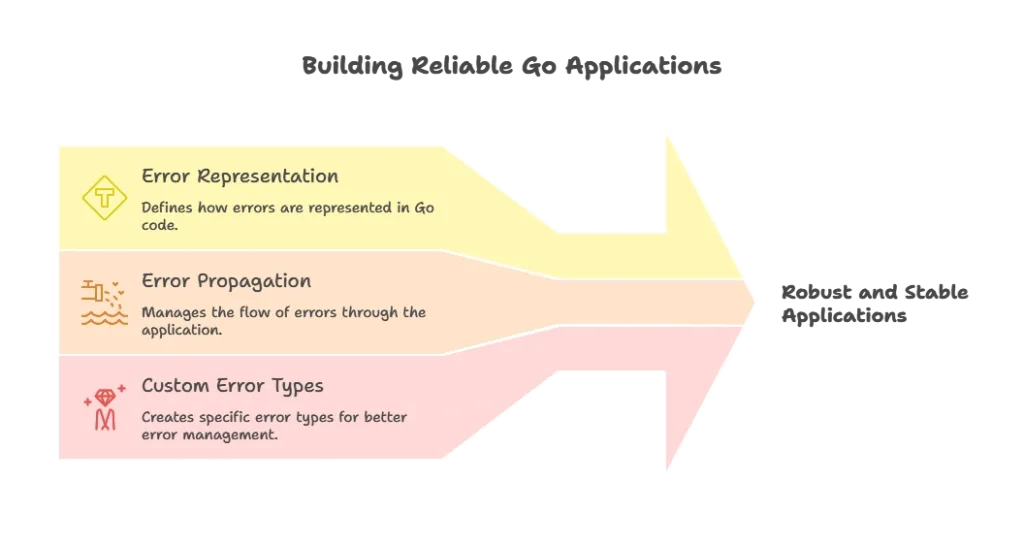Error Handling in Go
Error handling is a critical aspect of writing robust and reliable software in Go. It allows developers to gracefully handle unexpected situations and failures that may occur during program execution. In Go, errors are represented as values of the error type, providing a standardized way to communicate and manage errors throughout the program.
Basics of Error Handling
In Go, errors are represented by the error interface, which has a single method Error() that returns a string describing the error. Functions in Go typically return an error as their last return value, indicating whether the function executed successfully or encountered an error.
package main
import (
"errors"
"fmt"
)
func divide(x, y float64) (float64, error) {
if y == 0 {
return 0, errors.New("division by zero")
}
return x / y, nil
}
func main() {
result, err := divide(10, 0)
if err != nil {
fmt.Println("Error:", err)
return
}
fmt.Println("Result:", result)
}
- The
dividefunction takes two float64 arguments and returns the result of division and an error. - Inside the
dividefunction, it checks if the divisoryis zero. If it is, it returns an error using theerrors.New()function. - In the
mainfunction, thedividefunction is called with arguments10and0, and the returned error is checked. - If the error is not
nil, it means an error occurred, and it’s printed to the console.
Error Propagation
In Go, errors can be propagated up the call stack by returning them from functions. This allows higher-level functions to handle errors appropriately or propagate them further if necessary.
package main
import (
"errors"
"fmt"
)
func operation() error {
// Simulate an error
return errors.New("operation failed")
}
func process() error {
err := operation()
if err != nil {
return fmt.Errorf("failed to process: %w", err)
}
return nil
}
func main() {
err := process()
if err != nil {
fmt.Println("Error:", err)
return
}
fmt.Println("Processing completed successfully.")
}
- The
operationfunction simulates an error by returning an error value. - In the
processfunction, it calls theoperationfunction and checks for errors. If an error occurs, it wraps the error with additional context usingfmt.Errorf()and returns it. - In the
mainfunction, theprocessfunction is called, and the returned error is checked and printed if notnil.
Custom Error Types
In addition to using the errors.New() function to create errors, custom error types can be defined by implementing the Error() method on a custom struct.
package main
import "fmt"
type CustomError struct {
message string
}
func (e *CustomError) Error() string {
return e.message
}
func operation() error {
// Simulate an error
return &CustomError{message: "custom error occurred"}
}
func main() {
err := operation()
if err != nil {
fmt.Println("Error:", err)
return
}
fmt.Println("Operation completed successfully.")
}
- The
CustomErrorstruct is defined with amessagefield. - The
Error()method is implemented onCustomError, satisfying theerrorinterface by returning the error message. - In the
operationfunction, an instance ofCustomErroris returned to simulate a custom error. - In the
mainfunction, the returned error is checked and printed if notnil.

Error handling is an integral part of writing reliable and maintainable Go code. By understanding the basics of error handling, including error representation, propagation, and custom error types, developers can effectively manage errors and ensure the robustness of their applications. With a systematic approach to error handling, Go programmers can enhance the resilience and stability of their software systems. Happy coding !❤️
